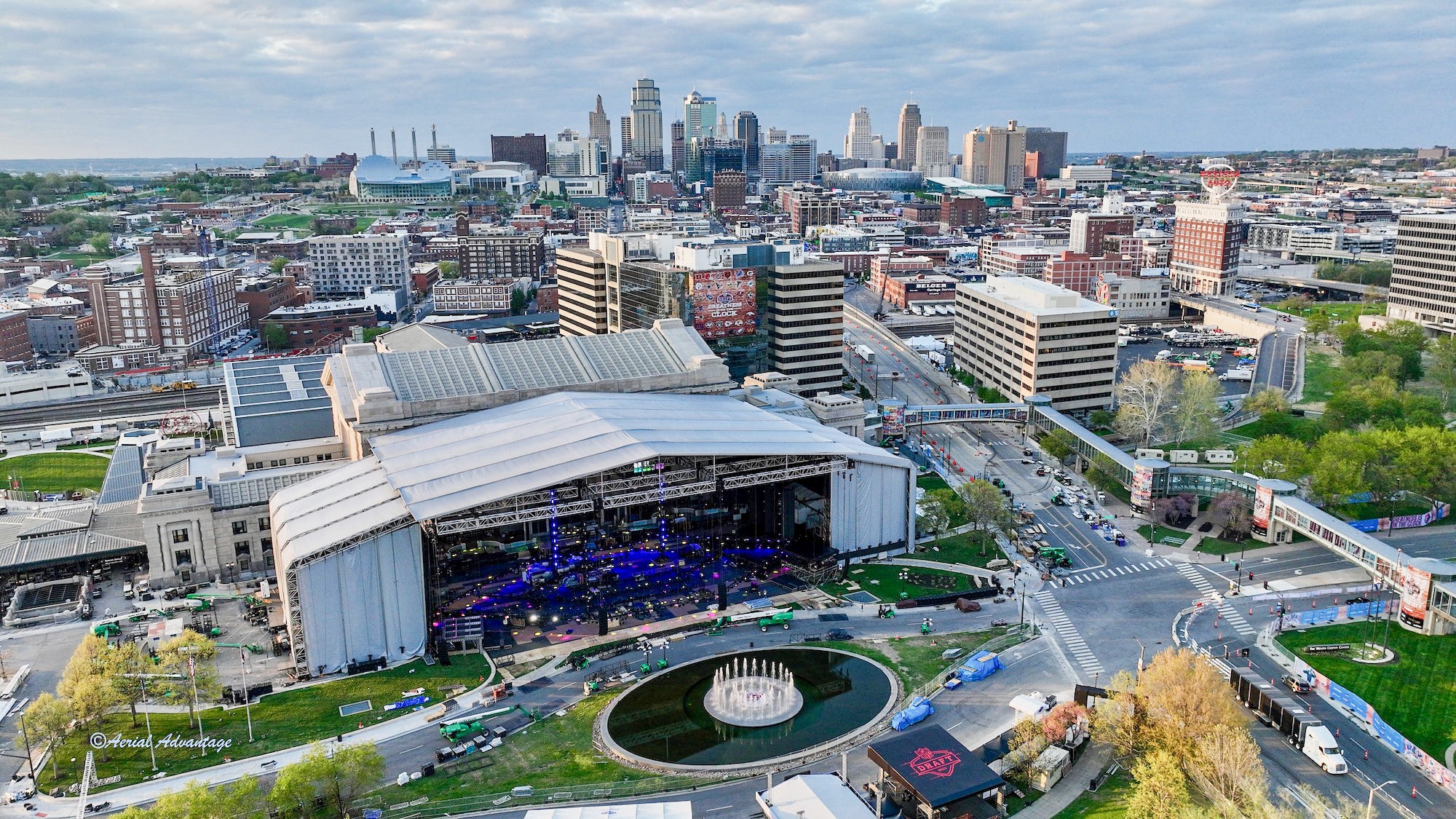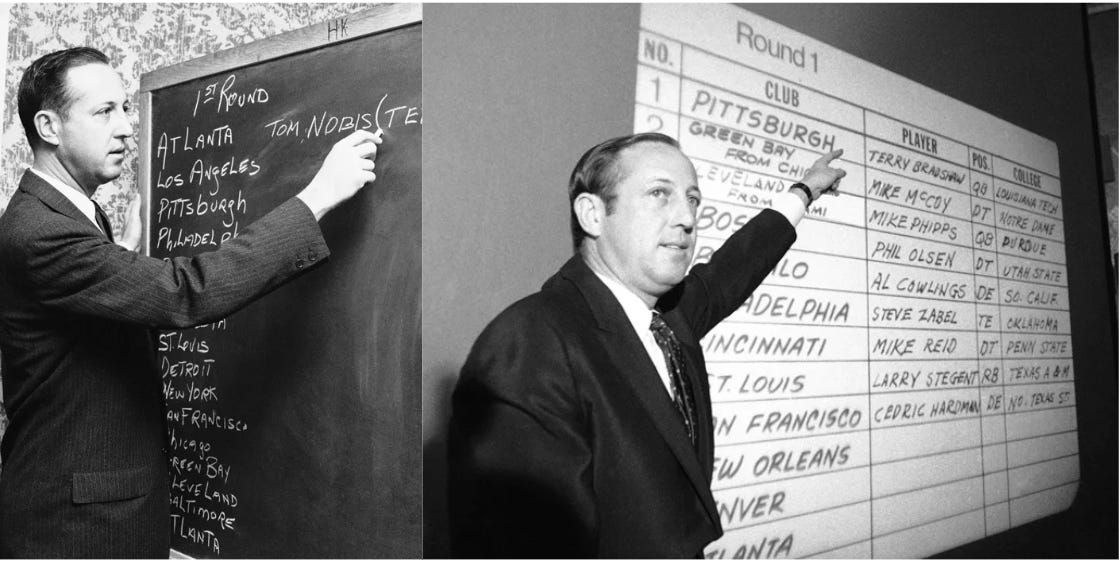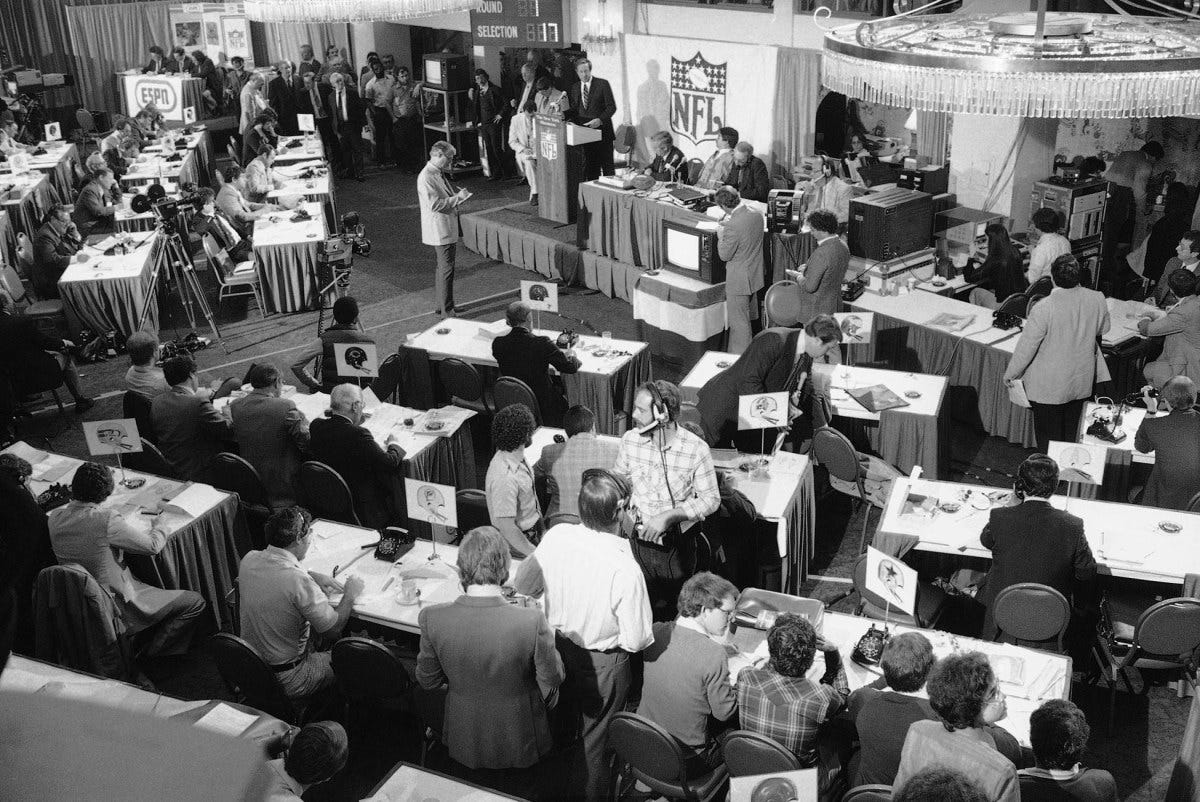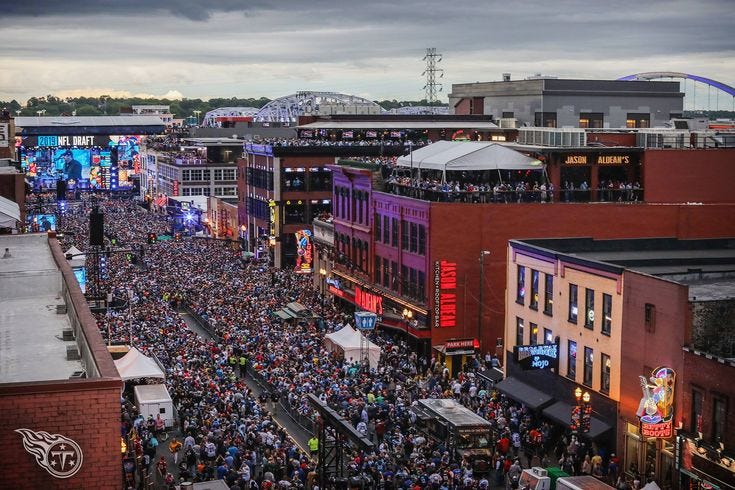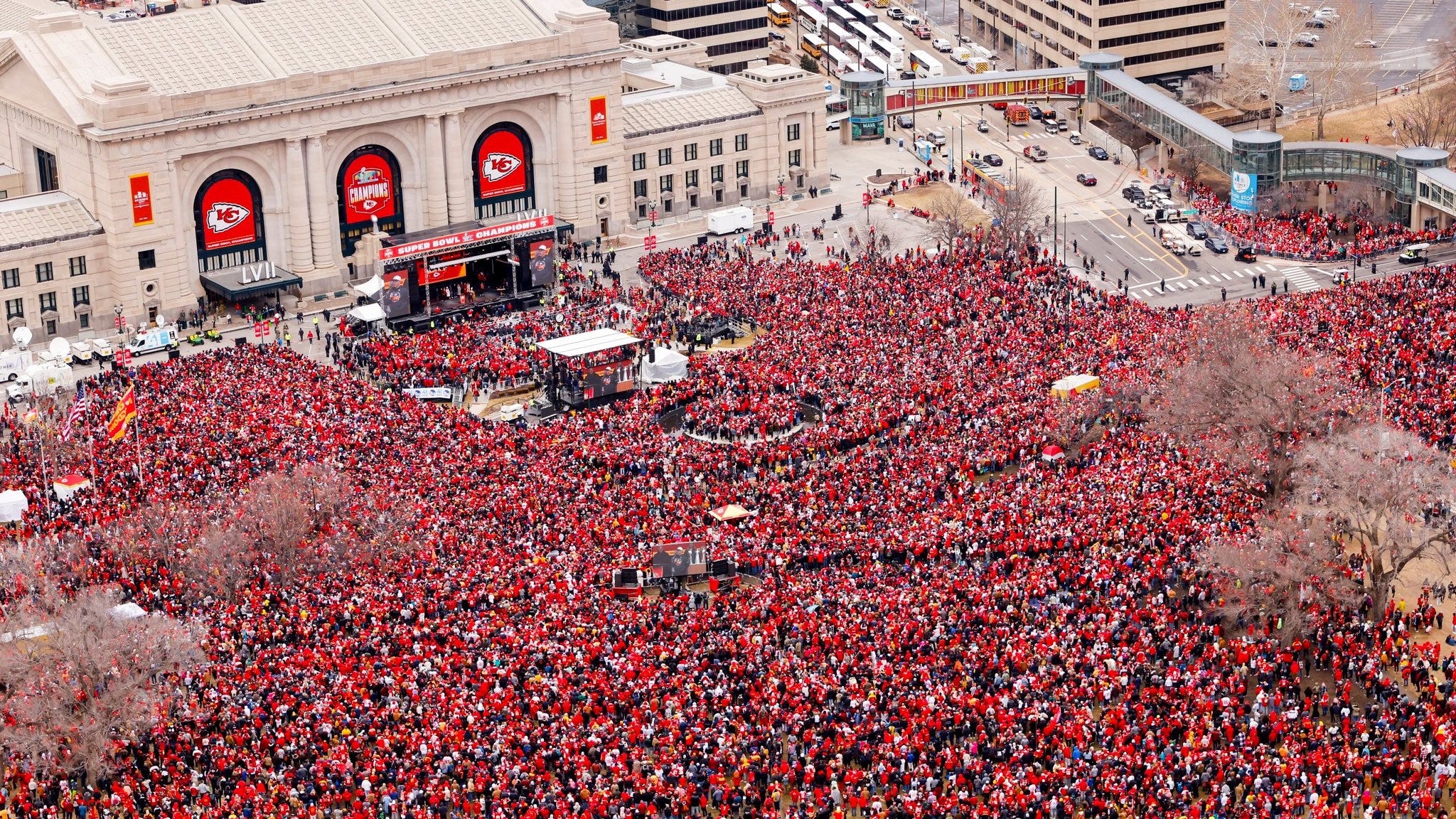The $100 Million Business Behind The NFL Draft
Huddle Up is a 3x weekly newsletter that breaks down the business and money behind sports. If you are not already a subscriber, sign up and join 100,000+ others who receive it directly in their inbox each week. Today At A Glance:The 2023 NFL Draft kicks off on Thursday night. So today’s newsletter breaks down the impressive history, money, and business behind the event, including the incredible logistics, increasing attendance, economic impact, and future. This newsletter is also available via podcast on Apple or Spotify. Enjoy! Today’s Newsletter Is Brought To You By SoFi!SoFi is the all-in-one finance app helping you bank, borrow, invest, and save. SoFi’s mission is to help members achieve financial independence and realize their ambition, all in one app. SoFi is transforming the industry and disrupting how the world sees personal finance, and it’s the single app you need to get your money right. I’m a SoFi member, and I love it. SoFi is legit, and they comply with the strict regulatory standards of the FDIC so you can be sure your money is safe. Friends, This year’s NFL draft is in Kansas City, Missouri. There will be more than 300,000 people in attendance. Taxpayers are spending $3 million on the construction of temporary infrastructure alone, and the venue is the size of a football field. Crews have hauled in over 500 semi-trucks worth of material, including 7.5 miles of fence lines and 1.5 miles of concrete barriers. And it’s a music festival, too, with performances by Fall Out Boy, Motley Crue, and Thundercat throughout the weekend. The NFL Draft is a spectacle — plain and simple. Roughly 10 million people will watch the first round. And with the installation of 168 speakers and 10,000 square feet of video display boards, the production quality is second to none. But the NFL’s annual draft wasn’t always this flashy. In fact, ESPN *made* it this way. The NFL didn’t have an annual draft for its first 15 years of existence. But then Eagles owner Bert Bell (who would later become NFL commissioner) was tired of his team losing and pitched an idea to even the playing field: a draft of college players in which teams would pick based on the reverse order of finish from the year before. “Gentlemen, I’ve always had the theory that pro football is like a chain,” Bell said. “The league is no stronger than its weakest link, and I’ve been a weak link for so long that I should know. Every year the rich get richer, and the poor get poorer. Four teams control the championships, the Giants and Redskins in the East and the Bears and Packers in the West. Because they are successful, they keep attracting the best college players in the open market — which makes them successful. I propose a change.” And that’s how the NFL Draft was born. However, it looked much different back then. The first NFL Draft was held in 1936 at the Ritz-Carlton Hotel in Philadelphia. There were only 81 players selected, compared to 262 today. And that year’s top pick, Heisman winner Jay Berwanger, turned down the NFL to become a salesman instead. Fun Fact: The NFL upgraded from a chalkboard to a projector in 1970. Then a significant shift happened in 1980. A new all-sports cable network called ESPN approached NFL Commissioner Pete Rozelle and asked to broadcast the draft. Rozelle and the 28 NFL owners initially hesitated, doubting anyone would want to watch him read names off a list “like a phone book.” But ESPN was persistent, needing content for its new channel, and the NFL eventually agreed. So ESPN sent a team of 5 employees to the New York Sheraton Hotel. They set up a small desk outside a ballroom where all the owners were meeting, and they brought in a group of former GMs, players, and coaches to analyze all the college draft picks. And the rest is history. The NFL was happy with how the broadcast turned out, and ESPN has now televised the NFL Draft for 44 consecutive years. The format of the NFL Draft has changed over time. For example, the NFL famously moved the start time from Tuesday to Sunday in 1988 primarily because the Marriott Marquis Hotel offered cheaper rates for the ballroom on that day. But they moved it to primetime in 2010, and ESPN now prepares a highlight package for all 259 draft picks each year — amounting to about 35 hours of programming throughout the weekend. And the business is fascinating, too. After hosting the NFL Draft at Radio City Music Hall in New York City from 2006 to 2014, the NFL decided to take it on the road in 2015, and hundreds of thousands of people now show up to the host city each year. NFL Draft Annual Attendance
And when you look at TV viewership, the numbers are even more impressive. The first round of the 2022 NFL Draft in Las Vegas averaged more than 10 million viewers. That was 152% higher than the NBA Draft, 1,185% higher than the MLB Draft, and 2,094% higher than the NHL Draft.
Of course, those other leagues are smaller than the NFL and aren’t necessarily known for their captivating draft process. But even when you compare the NFL draft to some of the world’s biggest sporting events, the numbers are still mind-blowing. For example, the first round of the 2022 NFL Draft had more viewers than last year’s Daytona 500, Indianapolis 500, MLS Cup, UEFA Champions League Final (US broadcast), every golf major except the Masters, and every tennis grand slam final.
And the event is only getting bigger. Kansas City is expecting between 300,000 to 600,000 people throughout the weekend, potentially making it the largest event ever hosted by the city. And they’ve also added experiences like autograph sessions with players and photo ops with the Lombardi Trophy and all 56 Super Bowl rings. Ps. This is what Union Station looked like during this year’s Chiefs championship parade. It was 40 degrees and windy, but more than 500,000 people still showed up. So my point is simple: the NFL Draft has become a big business. Cities are now bidding and begging the NFL to host the event — just like they do for the Super Bowl. And it’s for good reason. The NFL Draft has proven its ability to create a substantial economic advantage for the host city, with most cities generating a $100 million-plus economic impact on less than $10 million of taxpayer money spent. That’s a trade any mayor in the country will make. But don’t be surprised if the NFL gets aggressive and starts using the event as leverage for new stadium deals and more. Thank you for reading Huddle Up. This post is public so feel free to share it. I hope everyone has a great day. We’ll talk on Friday. Interested in advertising with Huddle Up? Email me. Your feedback helps me improve Huddle Up. How did you like today’s post? Loved | Great | Good | Meh | Bad Want More Detailed Sports Business Breakdowns? Subscribe To JPS.The Joe Pomp Show is a 3x weekly podcast where I break down the business and money behind sports. Think of it as the same high-quality work you read here, just deeper. There are exclusive interviews with people like Dana White, Lance Armstrong, and Troy Aikman, and you’re guaranteed to learn something new. Huddle Up is a 3x weekly newsletter that breaks down the business and money behind sports. If you are not already a subscriber, sign up and join 100,000+ others who receive it directly in their inbox each week.
Read Huddle Up in the app
Listen to posts, join subscriber chats, and never miss an update from Joe Pompliano.
© 2023 |


